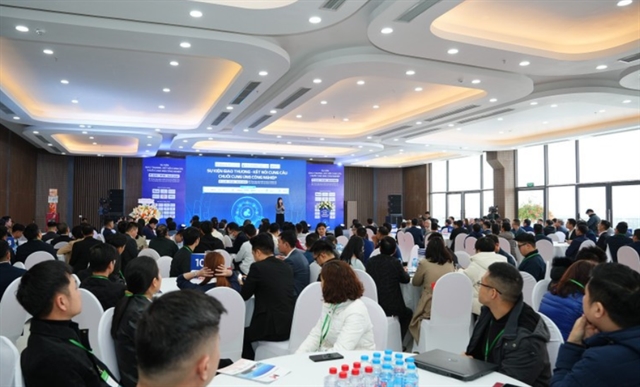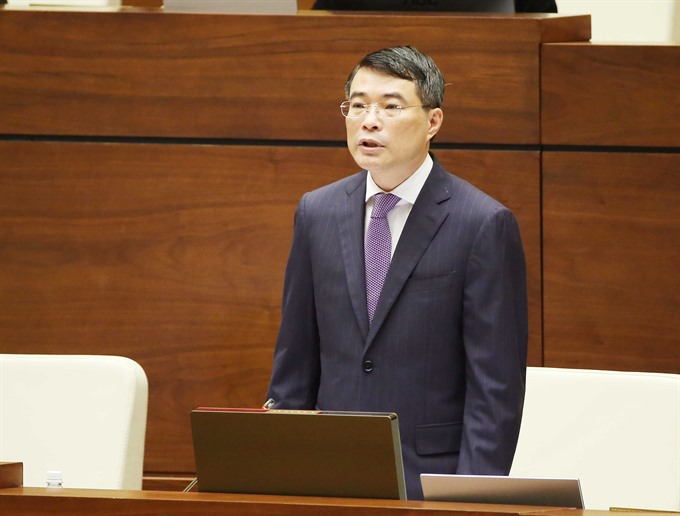 Economy
Economy

State Bank of Việt Nam (SBV) Governor Lê Minh Hưng expressed confidence that the central bank would maintain the stability of the đồng/dollar exchange rate.
 |
| State Bank of Việt Nam Governor Lê Minh Hưng. — VNA/VNS Photo Phương Hoa |
HÀ NỘI — State Bank of Việt Nam (SBV) Governor Lê Minh Hưng said yesterday he was confident that the đồng/dollar exchange rate will remain stable for the foreseeable future.
Hưng was responding to a question from a deputy as he took the floor once again on Friday morning after almost three hours on Thursday in his first parliamentary Q&A session since assuming office.
Acknowledging difficulties in keeping the exchange rate steady, Hưng said application of the “central exchange rate” mechanism since early 2016 has resulted in positive market developments.
He said since the beginning of 2017, the central bank has bought more than US$7 billion in foreign exchange, raising reserves to a record high of over $46 billion.
“With this scale of foreign exchange reserves and current management policies, keeping the exchange rate steady is definitely possible,” he said.
On the issue of secure card payments, Hưng admitted that instance of payment fraud through ATM cards has risen to an alarming level in the country, although the damage only amounted to one-third of the global average.
He attributed the situation to weaknesses in the banks’ security systems and the failure of card users and card acceptors to protect individual information.
The central bank has issued several policies and regulations and increased monitoring of bank cards to make them more secure, he said.
On intricate cross-ownership in the banking system that has been in vogue for a long time, the Governor said the case of a group of large shareholders holding sway over bank operations has been identified and dealt with, making them more transparent.
“So far, no individual owns more than five per cent of the total equity of a bank. The instances of a pair of banks holding shares in each other have reduced from seven in 2012 to two. Instances of pairs of banks where one bank owns shares in the other bank have reduced from five to two,” he said.
He added that if the NA approves the draft law on credit institutions, the situation will be resolved more thoroughly. Besides this, the central bank would step up inspections to monitor banks’ shareholders and related people, and strictly deal with violations on share ownership, he said.
Responding to a question from deputy Bùi Văn Xuyền of Thái Bình Province on non-performing loans (NPLs), the governor said the bad debt ratio as of September this year was 2.34 per cent.
However, if potential NPLs and those sold to the Việt Nam Asset Management Company were taken into account, the total value of NPLs amounted to VNĐ556 trillion ($24.5 billion), or 8.61 per cent of total outstanding loans, more than one percentage point lower than that at the end of last year.
Deputy Đặng Ngọc Nghĩa from the central province of Thừa Thiên-Huế asked if the central bank could waive debts or reduce interest rates on loans taken by victims of recent typhoons in the central region to ease their burden.
Hưng said the central bank had, in fact, instructed banks to estimate damage caused by the disasters and restructure people’s debts. The Vietnam Bank for Social Policies would continue to check and reviews the situation and decide to waive or reschedule the debts of disaster victims, he added.
“If needed, commercial banks can ask the central bank and the Ministry of Finance to forgive their debts,” he said.
Responding to the concern that too much money had flowed into real estate, raising the risk of a property bubble, the central bank governor said loans to the real estate sector amounted to VNĐ400 trillion, accounting for some 6.5 per cent of total outstanding loans.
He emphasised that the central bank had implemented several measures to control loans to this sector, including: raising the risk coefficient of real estate loans; adjusting the ratio of short-term funds for medium- and long-term loans; and restricting bank loans to houses in projects for low and average income earners. — VNS


.jpg)

